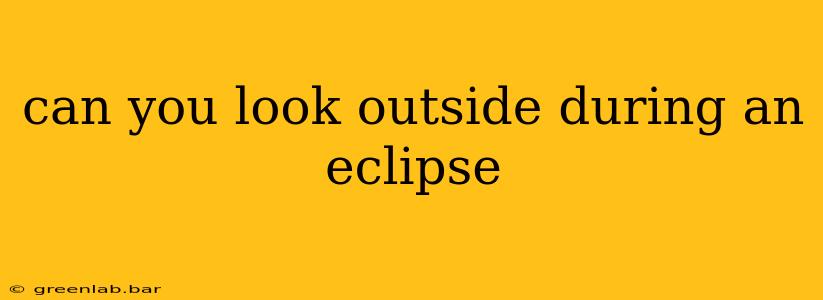Is it Safe to Look at the Sun During a Solar Eclipse? A Definitive Guide
Looking directly at the sun, even during a partial solar eclipse, is extremely dangerous and can cause serious and permanent eye damage. You should never look directly at the sun without proper eye protection. This applies to all phases of a solar eclipse, from the partial phases to the moment of totality (if you're in the path of a total solar eclipse).
Here's a breakdown of why and what safe viewing options exist:
Why Looking at the Sun During an Eclipse is Harmful
The sun emits incredibly intense radiation, including infrared and ultraviolet light. This radiation can damage the retina, the light-sensitive tissue at the back of your eye. This damage can lead to:
- Solar retinopathy: This condition causes blurry vision, distorted vision, or even blindness. The damage can be gradual and may not be immediately noticeable.
- Permanent vision loss: In severe cases, the damage is irreversible, resulting in permanent vision impairment or blindness.
Even during a partial eclipse, when a significant portion of the sun is still visible, the remaining sunlight is still intense enough to cause damage. The sun's brightness tricks your eyes into thinking it's safe to look at, but this is a dangerous illusion.
Safe Ways to View a Solar Eclipse
There are several safe methods to observe a solar eclipse without risking your eyesight:
-
ISO 12312-2 Certified Solar Viewing Glasses: These glasses are specifically designed to filter out harmful solar radiation. Ensure they meet this international safety standard before use. Do not use homemade filters or regular sunglasses – they are not safe.
-
Solar Filters for Telescopes and Binoculars: If you're using optical equipment to view the eclipse, you'll need special solar filters designed for these instruments. These filters attach to the front of the telescope or binoculars. Never look through the telescope or binoculars without a properly fitted solar filter.
-
Pinhole Projection: This is a safe and simple method that projects an image of the sun onto a surface. Create a small hole in a piece of cardboard and let sunlight pass through it onto another piece of cardboard held behind it. The image of the sun will appear on the second piece of cardboard.
-
Indirect Viewing: Watch the eclipse indirectly by projecting the image onto a wall or surface using a mirror or binoculars. This is a safer alternative than directly viewing the sun.
During a Total Solar Eclipse
Only during the brief period of totality in a total solar eclipse is it safe to look directly at the sun without eye protection. Totality is when the moon completely blocks the sun's disk. As soon as the sun begins to reappear, you must put your solar glasses back on.
Protecting Your Eyes: Key Takeaways
The allure of a solar eclipse is undeniable, but protecting your eyesight is paramount. Never compromise your eye health for a glimpse of this celestial event. Use only certified solar viewing glasses or employ safe indirect viewing methods. Remember, the damage to your eyes is irreversible. Enjoy this spectacular event safely!

